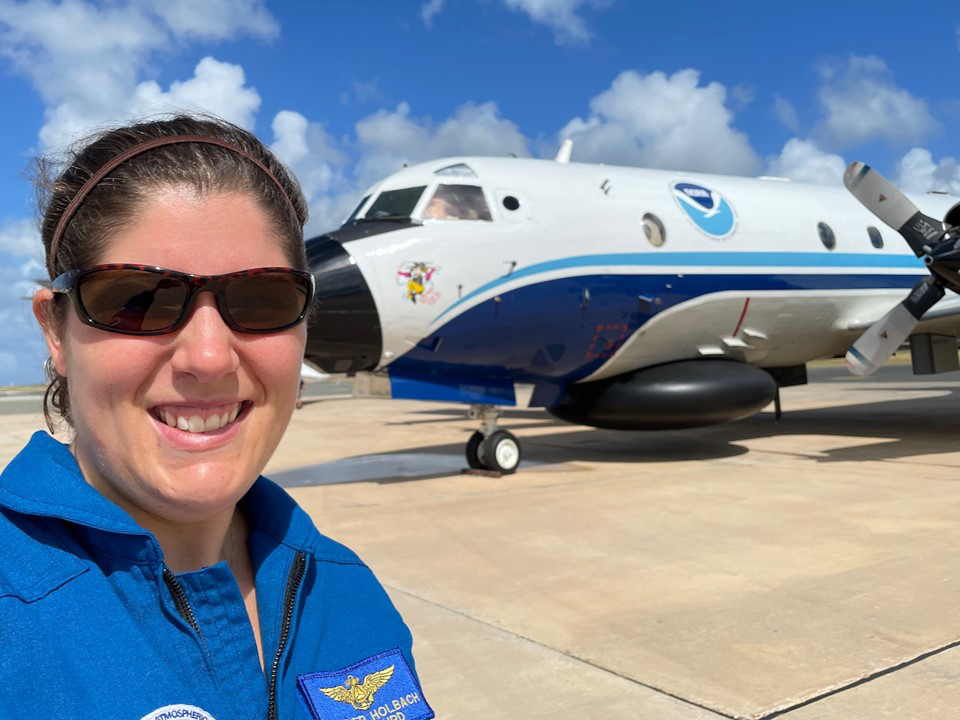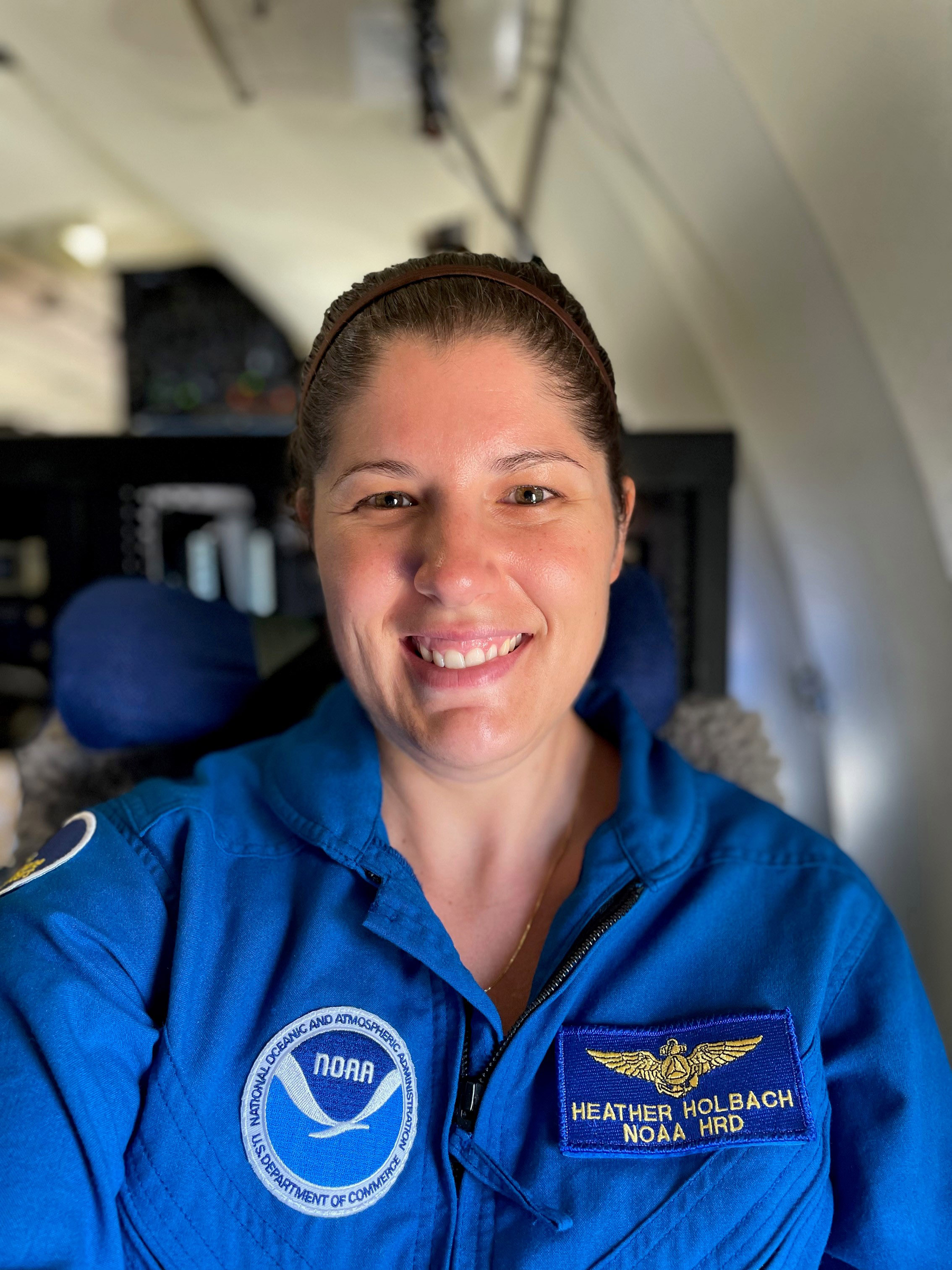Going into the Eye of the Storm for Better Hurricane Predictions
March 4, 2022

Meteorologist Heather Holbach collaborates with scientists at the NOAA Hurricane Research Division to improve the data that goes into storm forecasts. Here, Heather stands next to the NOAA P-3 hurricane hunter aircraft Miss Piggy used for missions that she participates in to collect data for her research. Photo by Heather Holbach.
Forecasts by the National Hurricane Center (NHC) consider a variety of atmospheric variables, with one being wind speed at the ocean's surface.
To improve estimates of surface wind speed, Heather Holbach, a meteorologist at Florida State University Center for Ocean-Atmospheric Prediction Studies, is collaborating with scientists at the National Oceanic and Atmospheric Administration (NOAA) Atlantic Oceanographic and Meteorological Laboratory's Hurricane Research Division (HRD).
As part of this collaboration, she participates in hurricane hunter missions to collect data for her research and has gone into the eyewalls of 10 different hurricanes 70 times!
This effort involves the evaluation and refinement of the Stepped-Frequency Microwave Radiometer (SFMR), which is flown on NOAA and Air Force hurricane hunter aircraft and is the primary tool used for collecting surface wind speed data that, in turn, is used as input to numerical forecast models and by forecasters at the NHC. Heather began working with the SFMR while obtaining her Ph.D. under the advisement of Mark Bourassa, Professor of Meteorology, who led initial collaborative efforts with HRD and NHC forecasters to improve its wind speed estimates.
From that research came insights into factors affecting measurement accuracy, such as the aircraft's angle with respect to the surface, heavy rainfall, and a greater variation than expected between the SFMR estimates and those from other sources, such as dropsondes and surface-adjusted flight-level winds. Upon further investigation, Heather found that by adding several more years of data to train the SFMR algorithm, there was a deficiency in the accuracy of the SFMR wind speed retrievals at high wind speeds.
Heather also found that the detection of radio frequency interference (RFI) in the SFMR processing needed to be updated with a more robust technique to improve the data used to estimate wind speed. She determined that reflectivity data from the tail-Doppler radars (TDR) on the NOAA hurricane hunter aircraft will help to correct for rain impacts. She will use data collected during the 2021 and 2022 hurricane seasons to serve as independent data to test the updated algorithm, which will then be provided to NOAA and Air Force hurricane hunters for consideration to implement operationally.

Heather Holbach, a meteorologist at Florida State University's Center for Ocean-Atmospheric Prediction Studies, participates in hurricane hunter flights to collect data for storm forecasts. Here, Heather sits at her workstation onboard the NOAA P-3 aircraft Miss Piggy. Photo by Heather Holbach.
A related effort that Heather is pursuing is the potential for the TDRs on the NOAA hurricane hunter aircraft to provide estimates of the surface wind field over a larger area below the aircraft. Right now, the spatial coverage of the aircraft-based surface wind speed estimates is limited to along the flight track or point measurements, leading to an under-sampling problem with the peak intensity and desired wind radii not likely being observed on any given flight.
Through collaborations with TDR experts at HRD, Heather is developing a method to reduce the low-level TDR winds to the surface by utilizing comparisons to the SFMR and dropsondes.
The TDR has been collecting data since the late 1990s, providing a vast archive of data to use in this endeavor. Obtaining surface wind speed estimates from the TDR will help to tackle the under-sampling problem of the surface wind field that currently exists.
Storm safety is the motivation that drives Heather's work: "This research will have a direct impact on improving the analysis and forecasts of tropical cyclone wind fields that can be used to help protect life and property."
Heather is the Principal Investigator of two projects that receive funding from the Northern Gulf Institute, Improvements to Surface Wind Speed Estimates in Tropical Cyclones and TDR Surface Wind Reduction.
By
Nilde Maggie Dannreuther, Northern Gulf Institute Mississippi State University
Heather Holbach, Florida State University Center for Ocean-Atmospheric Prediction Studies.

